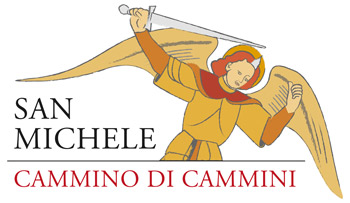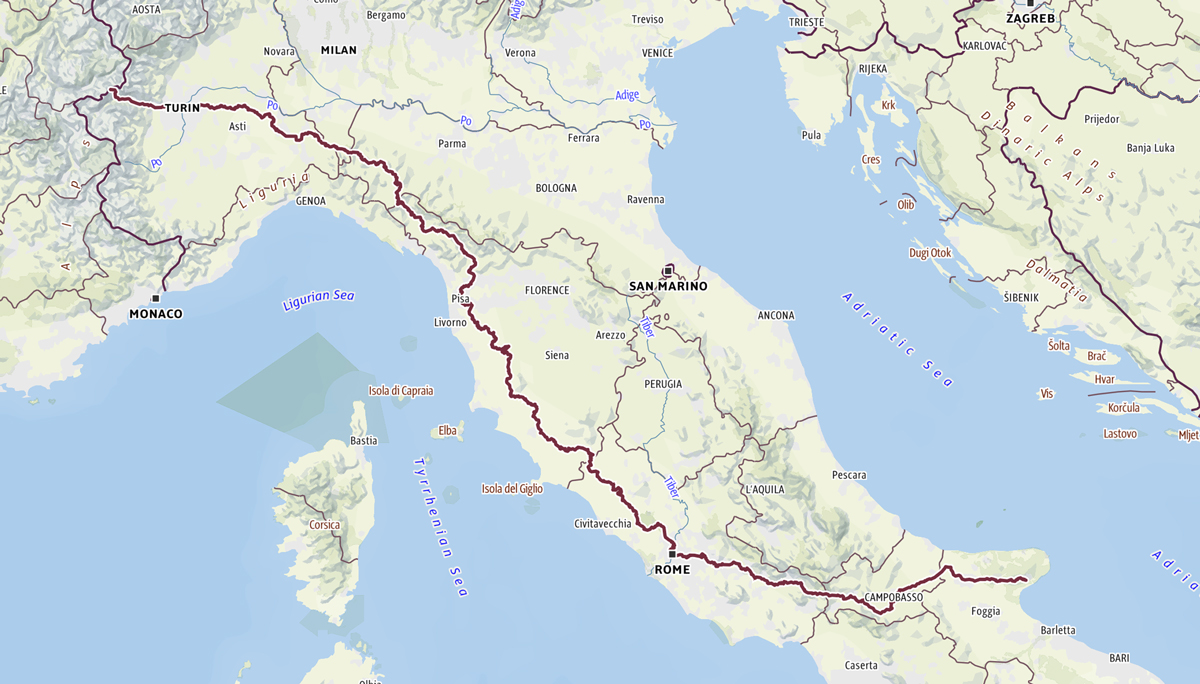Italy
Cultural sites of interest
| Name | Longitude | Latitude |
| Chiesa di San Michele Arcangelo dei Bianchi Interesse | 10.1320559 | 44.1759924 |
| San Casciano | 10.5134411 | 43.691501 |
| Castello di Fosini | 10.9371716 | 43.1706492 |
| Sovana | 11.6450578 | 42.6571551 |
| Sorgenti Nova | 11.6780939 | 42.5945518 |
| Norchia Necropoli Etrusca | 11.945435 | 42.340448 |
| Romitorio S. Michele Arc Serrone | 13.1057883 | 41.8441348 |
| Abbazia San Domenico Abate | 13.5794623 | 41.6969296 |
| Complesso monumentale di San Vincenzo al Volturno | 14.0837563 | 41.6500163 |
| Chiesa S. Jacopo | 10.3870165 | 43.753599 |
| Eremo di San Michele alle Formiche – pomarance | 10.87197 | 43.26528 |
| Chiesa dei Santi Michele e Silvestro | 11.0076806 | 43.1673091 |
| Abbazia di San Galgano | 11.155066 | 43.149474 |
| Chiesa di San Michele Arcangelo | 11.1113703 | 43.0263501 |
| Santuario di San Matteo Apostolo | 15.6584699 | 41.709163 |
| Convento Santuario Santa Maria di Stignano | 15.5802003 | 41.7193515 |
| Badia di San Sebastiano | 13.3757695 | 41.7162686 |
| Ponte romano | 13.3600345 | 41.7171921 |
| Chiesa di S. Michele Arcangelo | 12.4007649 | 42.0786862 |
| Battistero di San Giovanni | 10.3941347 | 43.7233163 |
| Chiesa di San Michele in Borgo | 10.4025282 | 43.7169807 |
| Chiesa di San Michele Arcangelo , località’ Sant’ Angelo – Piazza al Serchio | 10.2890986 | 44.1834581 |
| Certosa di Calci | 10.522337 | 43.721828 |
| Osservatorio Onde Garavitazionali – Virgo | 10.502076 | 43.630194 |
| Santuario Madonna dei Monti S. Ermo | 10.574941 | 43.533206 |
| Casciana Terme | 10.616521 | 43.527192 |
| Badia di Morrona | 10.651618 | 43.537976 |
| Abbazia Benedettina Della Novalesa | 7.008295 | 45.179248 |
| Cappella di San Michele di Assiere | 7.078962 | 45.115332 |
| Cappella di San Michele | 7.185998 | 45.104623 |
| Basilica di Superga | 7.767677 | 45.080802 |
| Abbazia di Vezzolano | 7.957277 | 45.080226 |
| Santuario Diocesano Madonna di Crea | 8.2682 | 45.096041 |
| Chiesa San Michele a Mirabello | 8.52346 | 45.035581 |
| Chiesa Parrocchiale di San Michele Arcangelo | 8.579385 | 44.937235 |
| Chiesa di San Michele Arcangelo | 8.863935 | 44.895828 |
| Pieve di Santa Maria | 8.925491 | 44.905406 |
| Chiesa San Michele | 8.138696 | 45.085948 |
| Eremo di San Michele | 9.4127792 | 44.7340082 |
The Way of Saint Michael in Italy follows a historic route that passes through seven Italian regions: Piedmont, Lombardy, Emilia-Romagna, Tuscany, Lazio, Molise, and Puglia. This path is based on pre-existing routes linked to the worship of Saint Michael, which the Lombards brought to Europe after the Bishop of Siponto’s pilgrimage to the Gargano Cave in 492.
The route is fully mapped using GPS, but some sections require maintenance and signage, with welcoming points for pilgrims and tourists along the way.
The journey begins at Moncenisio, crosses the Susa Valley, and reaches the Sacra di San Michele. It continues through various places of worship, such as the Abbey of Novalesa and the Basilica of Superga, before arriving at Crea and Pavia. The route then crosses Lombardy and Emilia-Romagna to reach Bobbio, with the Monastery of San Colombano. The Via degli Abati leads to Pontremoli in Tuscany, where it intersects with the Via del Volto Santo, passing through villages like Fivizzano and Lucca.
The path continues towards Pisa and Volterra, following traces left by the Lombards, and reaches Maremma. The journey then follows the Via Clodia, an ancient Roman road, towards Rome, passing through towns like Palestrina and the Ciociaria region, rich in pilgrimage traditions.
Finally, the route enters Molise and reaches the Gargano Cave, completing a journey that celebrates the worship of Saint Michael and Italy’s historical and religious heritage.
At the same time, the route intersects with other significant historical and religious itineraries, such as the Via Romea Strata, which connects Tuscany to the Veneto-Friuli-Slovenian area, passing through historically and religiously important cities such as Vienna, Krakow, Padua, Venice, and several locations in Slovenia. This path also connects with the Way of Saint Martin, which integrates various religious traditions and includes numerous sacred sites related to Saint Michael’s worship, such as those in Volterra, Crespina, Pomarance, Orciatico, and San Miniato. The presence of churches dedicated to Saint Michael along the route makes this journey not only a religious pilgrimage but also an opportunity to explore the history and culture of different regions.
Both paths, while following different directions, complement and integrate each other in their aim to highlight spirituality, culture, and shared history, passing through meaningful landscapes and cities that have played a crucial role in the history of Christianity in Europe. The connection between these routes, which pass through places of worship and religious traditions, contributes to building a spiritually and culturally united Europe.



